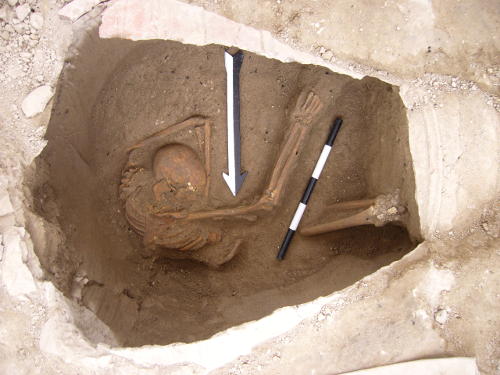River subbasins more depleted than
official figures show
09 April 2024
Published online 28 August 2017
How has historical movement impacted Lebanese populations?

© Claude Doumet-Serhal
Based on excavations of settlements in the Levant, archaeologists know that the Canaanites flourished roughly 4,000–3,000 years ago. Ancient texts from Egypt and Greece, and their appearance in the Bible – which tells the tale of Canaan’s destruction – provide some clues. Yet, we still don’t know where these people came from and where they went.
Haber explains that ancient DNA can provide knowledge which is not available from archaeology or historical texts.
Haber’s team extracted ancient DNA (aDNA) from five individuals at the site of Sidon — a major Canaanite coastal city — in present day Saida, Lebanon, excavated by Claude Doumet-Serhal, a co-author of the study.
Sequencing the DNA of five people might not sound like much. But, as Connie J. Mulligan - professor at the University of Florida Department of Anthropology and Genetics Institute - who was not involved in the study, explains, “Each person’s nuclear genome has bits from their parents, their grandparents, from their great grandparents, and so on…so one genome is not really just a single person when you think about it evolutionarily, because it’s capturing the genetic diversity of all of the generations that came before that person.”
Mulligan adds that a vast amount DNA data has been made available to researchers since the mapping of the human genome, enabling Haber’s team to plug previous data into their study to provide comparisons with regional and global DNA.
The results enabled the researchers to pin down the genetic history of the ancient Canaanites. As Harber says, “It’s the first time we found out genetically who they were. Now we know they were a mix of local Neolithic populations, plus some of what we call ‘eastern migrants’ from present day Iran.”
This mixing happened between 5,000 and 6,000 years ago or, as Haber explains, the interval between the non-mixed Neolithic inhabitants and the mixed Bronze Age Canaanite population.
The comparative study also found a strong genetic connection between Sidon and a slightly earlier Bronze Age village near ‘Ain Ghazal in Jordan. Haber reports, “they had different ways of life, but it seems that they share this genetic background.”
Haber’s team sequences the genomes of 99 people from the modern Lebanese population and compared these samples to a data set of previous DNA studies, so that together, “it’s a very well balanced and representative data set,” according to Haber.
The results surprised the team. Proportionally, roughly 10% of the modern DNA came from what the team calls a Eurasian population, that was not found in the Sidon samples, and which probably entered the population roughly 3,000–2,000 years ago.
But, the overwhelming majority of the modern DNA (roughly 90%) was very similar to the ancient Canaanite samples
Haber says, “If you look at the history of Lebanon from the Bronze Age to present day, it was a very vivid history, there were a lot of conquests and a lot of expansions in our region, but they seemed to have contributed very little to the present day populations.” Haber adds, “For us, it was surprising to see this huge genetic continuity between the Bronze Age toward the present day.”
doi:10.1038/nmiddleeast.2017.130
Stay connected: